8. Time Bandits
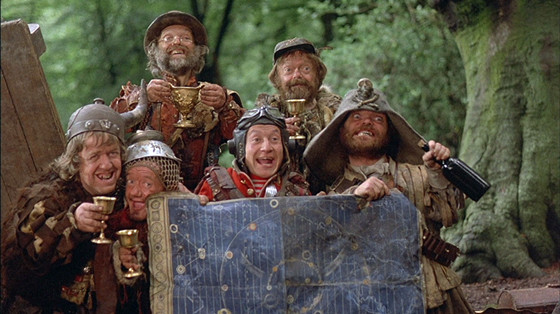
Gilliam didn’t have a chance to give his imagination full rein on screen till Time Bandits, which ended up becoming one of the few smash hits in his long career. It’s a brilliant conceit about a band of dwarves who steal a map to the universe from God (played by Ralph Richardson).
They fall into the bedroom of a young boy who is wrapped up in Arthurian legends and Greek mythology to escape the world of game shows, bad British TV and consumerism of his parents. They take him on a wild adventure through space and time, ending up in the Napoleonic wars, on the Titanic, and even on an excursion into the Middle Ages, where they meet John Cleese’s Robin Hood, who is depicted as patronizing politician.
It’s the best film for a newcomer to Gilliam to see, and it’s one of the few films aimed at kids that doesn’t try to second-guess the intelligence of young viewers. Time Bandits has more humour and imagination in under two hours than most filmmakers will have in an entire career. It’s also the first part of Gilliam’s self-described “Trilogy of Imagination,” which is followed by Brazil and The Adventures of Baron Munchausen.
7. The Adventures of Baron Munchausen
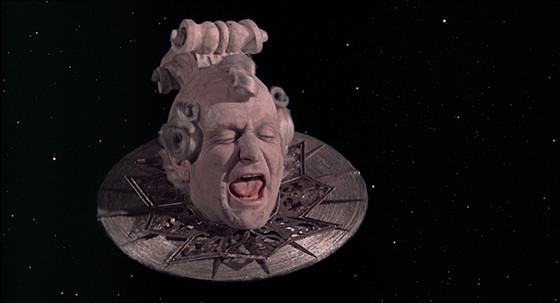
This was Gilliam’s most infamous production, and went wildly over budget. One of the producers lied about the size of the budget, and it just escalated from there—he was the Munchausen of film producers! The fact that the film is so great against all odds is kind of amazing.
Gilliam could do whatever he wanted, and there is one flaw, an overly long scene with Robin Williams as the King of the Moon. It ruined what could have been a lucrative Hollywood career, because his reputation as some kind of madman on the set started here—and is by all accounts not the case at all.
It’s the third segment in his “Trilogy of Imagination,” and it’s just a consistently creative and imaginative film based on world-building at an amazing scale. He was never able to get the same level of production value on screen.
The casting choice of John Neville as Munchausen was brilliant—he had been working forever but it was an inspired pick, as he brought no sort of “star baggage” with him. Gilliam also got one of the last great performances out of Oliver Reed here, as a loud, brutish Vulcan. Uma Thurman as Venus is his opposite in a great double act.
6. The Fisher King
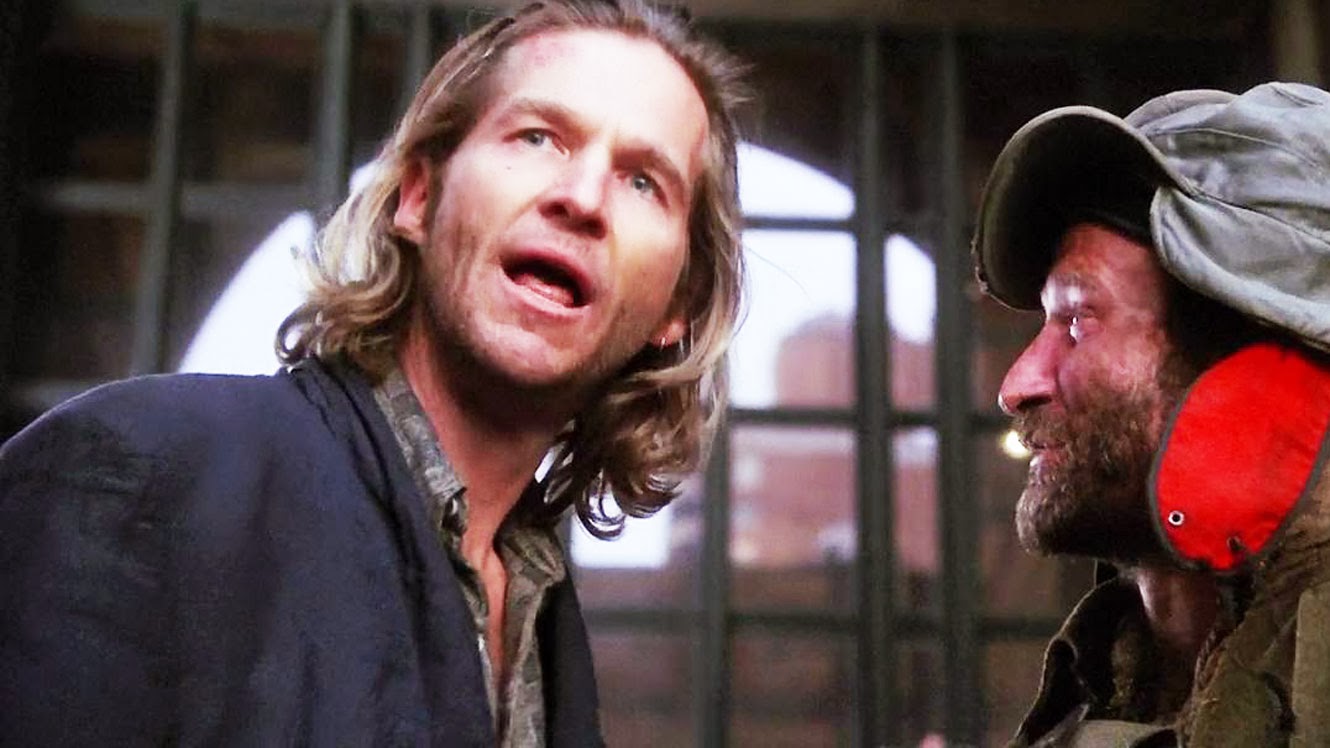
The Fisher King was the first entry in Gilliam’s “American Trilogy,” when he took on American stories and used Hollywood money to try to re-start his career after the flop that was Munchausen. Gilliam is originally American but has lived in London since the late ‘60s. He saw that he could finally be a “Hollywood director”’. It was a smaller film, and the kind of thing that Woody Allen would make.
The original script went through many, many drafts, including a version with Richard Pryer in the character later played by Robin Williams. Disney owned it at one point, and for a while James Cameron was going to direct it as his small movie after his usual blockbusters.
It’s Gilliam’s second film about the Holy Grail, and the first he did without any members of Monty Python in the cast. I would say it’s the best performance Williams ever gave. He perfectly gets the darkness and the humour of the character and probably closer the person Williams was than any other role. Jeff Bridges is also great.
It’s more grounded in reality than most of his other work, and yet remains full of imagination with Red Knight and the famous waltz sequence in Grand Central Station. Although the film and its stars were nominated for several Academy Awards, Gilliam himself was snubbed. Other than his children’s films, it’s also perhaps his most accessible movie, and a good entry point to Gilliam’s work.
5. Fear and Loathing in Las Vegas
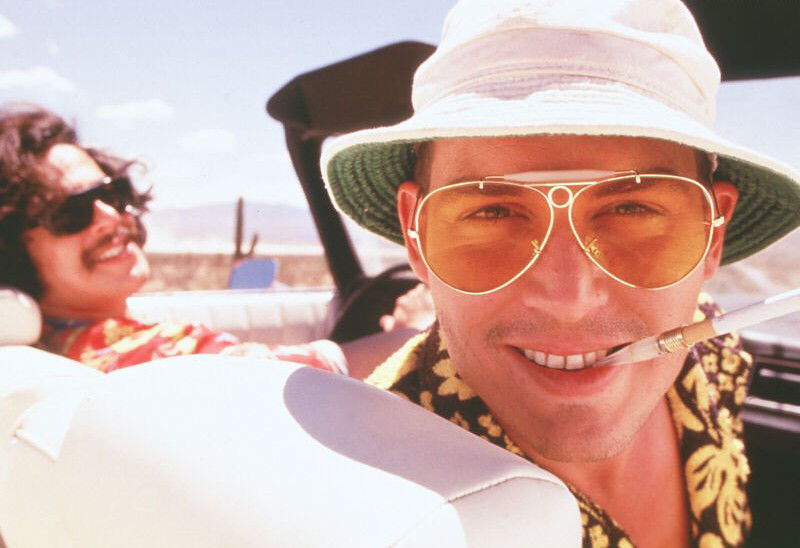
Fear and Loathing was a film that Gilliam jumped on at the last minute after Alex Cox was removed from the production. The screenplay was a classic case of the Writers Guild of America getting something wrong.
Gilliam had to prove he wrote 30 percent of the screenplay, along with Tony Grisoni, Cox and his wife Tod Davies, to get a credit, but you can’t really do that when dialogue is being taken from a book. Of course, the adaptation of Hunter S. Thompson’s book had been in the works since it was published, but it’s not the most adaptable book on the planet.
The fact that Gilliam was able to pull it off was helped enormously by the performances of Johnny Depp and Benicio del Toro, which brought Thompson’s semi-autobiographical tale of drug-induced insanity onto the screen. Depp did his research, living with Thompson for a while, and it’s a pretty uncanny take on the author that is willing to show his darker side as well.
The one big flaw is that they decided not to use the ending of the book, with the Thompson character having an existential crisis in an airport, but instead to have him drive away blasting the Rolling Stones. Otherwise it’s a very faithful adaptation, and a remarkable achievement. They didn’t have loads of money, but it was reportedly a very straightforward production so it was manageable.
4. 12 Monkeys
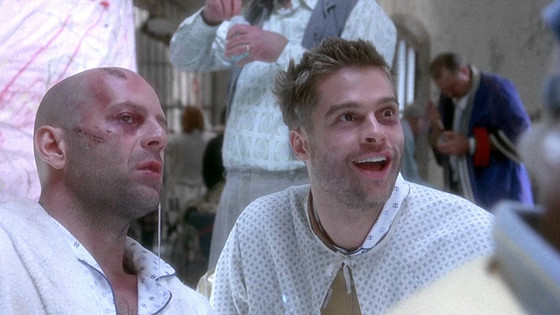
It’s loosely based on Chris Marker’s La Jetée, but comparing the two films is unfair. Gilliam claims he didn’t watch the original while making 12 Monkeys, although he says he had seen stills. It has many references to Vertigo, which was also Marker’s favourite film. It plays to all of Gilliam’s strengths because it’s a science fiction film about madness, time travel and politics, and there’s a pretty strong love story in there as well.
Bruce Willis has never been better—he was initially skeptical, and Gilliam’s initial choice had been Nick Nolte. Gilliam had been attracted to Willis because of the scene in Die Hard where he’s pulling glass out of his foot. Pulp Fiction had also just come out, which also showed he was more than an action movie star.
Brad Pitt’s turn as Jeffrey Goines was also the first times he’d been as seen as having serious acting chops, along with Se7en, which arrived the same year. He worked a lot with people who have paranoid schizophrenia to get the anxious character just right, and his very determined research won over Gilliam. It’s rare for actors in science fiction to get Academy Award nominations, but Pitt did for 12 Monkeys. There is also a great unsung performance from David Morse.
3. Tideland
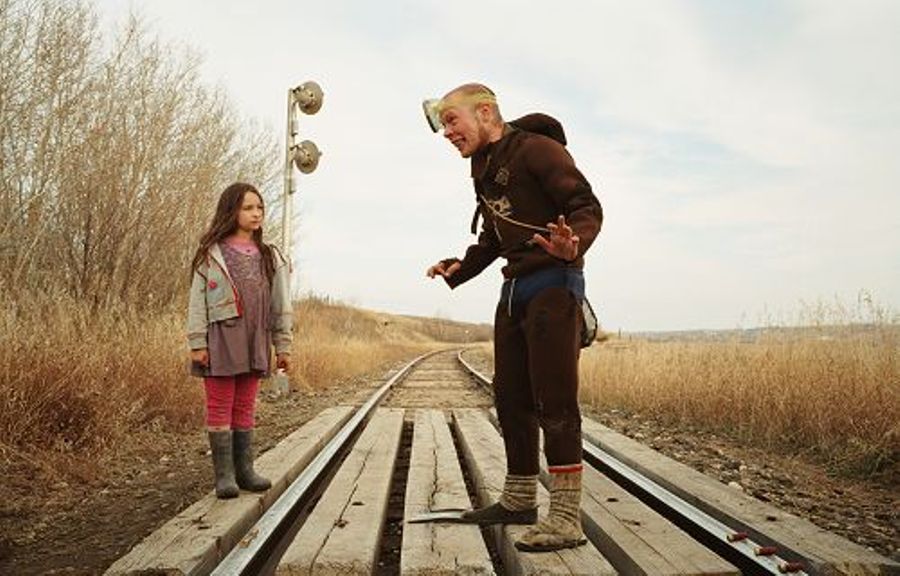
When Tideland came out, it was almost universally panned and condemned by critics: just watch the takedown by Richard Roeper, who said felt sickened by the film. The reality, however, is that it’s actually a very sweet kids film that is part Lewis Carroll and part Flannery O’Connor. It’s about Jeliza-Rose (Jodelle Ferland) who ends up on a rundown Southern farmhouse with her heroin-addict father Noah (Jeff Bridges), who abandons her. She has to go deeper and deeper into her imagination to cope with the situation she finds herself in.
It was made during a break during the post-production phase of The Brothers Grimm, and it’s like the enema that Gilliam needed to get all the Hollywood crap out of his system and make something pure again.
The relationship between Jeliza-Rosa and her mentally handicapped friend Dickens (Brenden Fletcher) came off as paedophilic to some, which is a gross misunderstanding of the situation as it never becomes “sexual,” it’s just little-kid kissing games. If anything her mental age is actually higher then Dickens’ (who is only a teenager in the film).
Tideland is the Gilliam film that is most ripe for rediscovery, because it had such a poor response at the time, but like most of Gilliam’s films it quickly gained a cult following. If you are willing to see if through the eyes of its little girl protagonist and not as a jaded, protective grown-up, it’s one of Gilliam’s most rewarding films.
2. The Man Who Killed Don Quixote
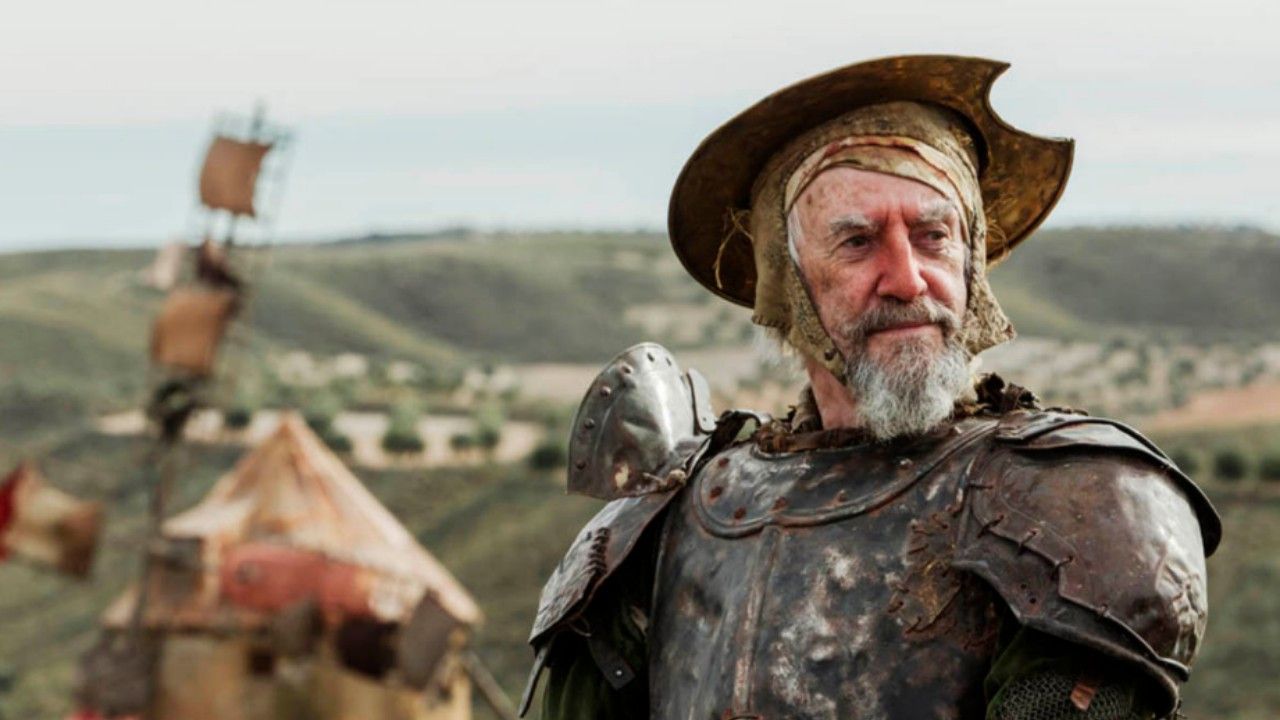
Terry Gilliam’s latest film is also one of his very best and most personal. His decades-long attempts to make Quixote have been legendary, but it was worth the wait. Adam Driver plays Toby Girosni, a faded director who is slumming it make Quixote-inspired adverts after making a arty black-and-white Quixote student film.
The Quixote in the village is Jonathan Pryce’s Spanish shoemaker Javier. Javier was cast in Toby’s student film, but when the director visits the town where he shot that film he finds out that Javier now believes he is the Man of La Mancha. It’s a rare film about the impact filmmaking can have on people even when they crew has left town, despite the failure of the version documented in Lost in La Mancha.
This can be positive or negative: for example, one of the “giants” cast in the original version had some kind of disability, but his short experience on the ill-fated film actually helped him gain the confidence and independence to move into his own place. Obviously here it’s taken into darker territory. It’s the Gilliam film most grounded in tangible reality since The Fisher King, which like that film uses an “odd couple” type of situation to navigate a grotesque landscape of giants, princesses and movie executives.
1. Brazil
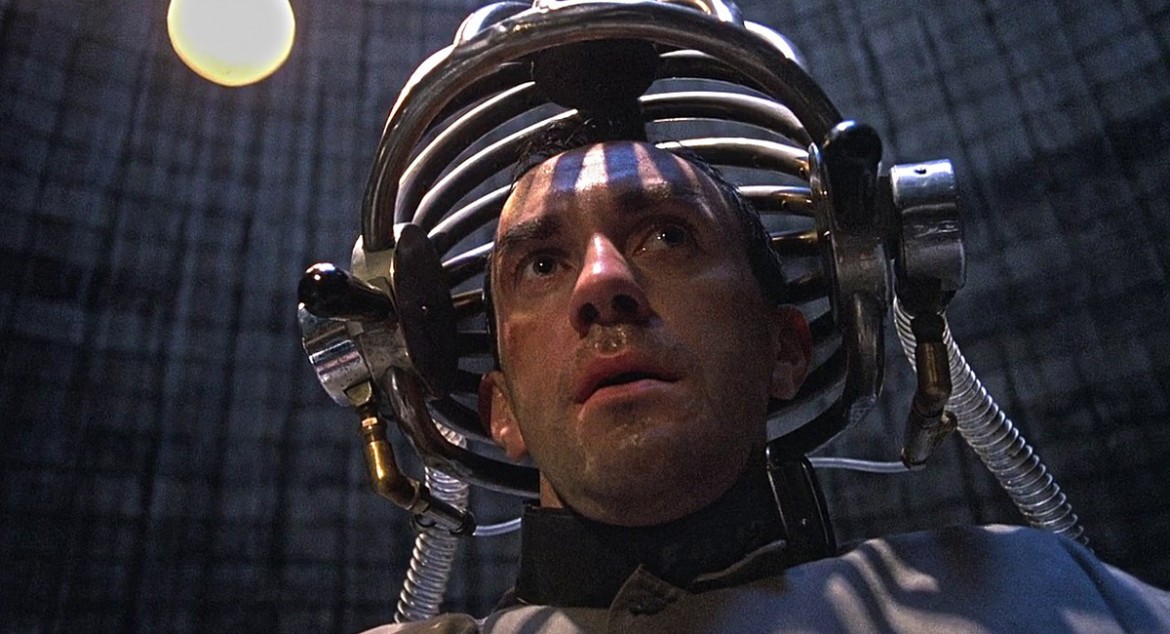
It’s the inevitable pick, and even Terry Gilliam knows it’s the film that will be in the Variety headline when he dies (along with being a member of Monty Python). The grand scale he was able to work in, despite Brazil having a fairly modest budget, is breathtaking. The “retro-futurist” world of absurd bureaucracy has been copied by every dystopian film in its wake.
Gilliam took his influence more from Franz Kafka than George Orwell (he claimed at the time that he had never read 1984), and Brazil is very much in the vein of Kafka’s own darkly comedic view of the world he inhabited as an insurance clerk who in his spare time went deeply into his own fantastical mind to cope with the world he saw. That is much like what protagonist Sam Lowry does in Brazil. G
illiam, of course, would go through his own Kafkaesque nightmare with Sid Shainberg’s Universal Pictures over his cut of the film. It may at the time have gotten a cold shoulder by overrated critics like Roger Ebert and Pauline Kael, but it had enough support from other critics and filmmakers to build the film’s cult.
If anything, Gilliam’s imagination and satirical bite has only gotten better in the 34 years since its release. It’s the Dr. Strangelove of the ’80s (Kubrick actually wanted Gilliam to make a sequel to that film), and with the NSA and the war on terror in this century, it seems like the world has caught up to Brazil.
Author Bio: Ian Schultz is a film critic who runs the site Psychotronic Cinema and has also contributed to Live for Films and Little White Lies. He spends far too much time watching films for his own good sometimes to the annoyance of his girlfriend. His cat Jaffa often joins him in his film viewing, her favourite film is El Topo. In his spare time outside of watching films, he is known to flick through record shops hunting down old post-punk, power pop and kiwi pop records. You can follow him on Instragram (@ianpsychotronic23).